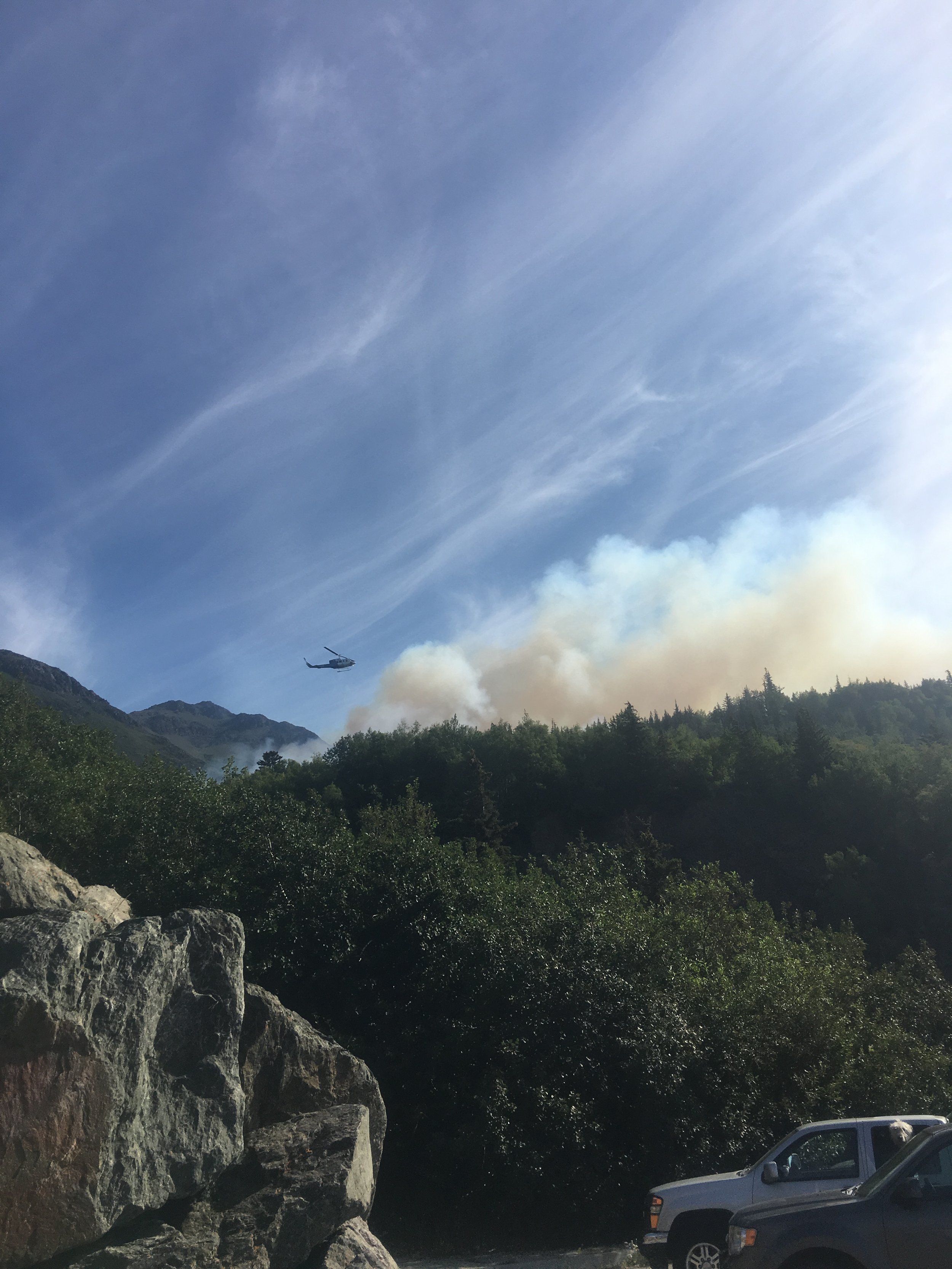Could Girdwood's Forests Burn?
By John Gallup
TNews Contributor
An overview of Girdwood Valley showing the large presence of wooded forest lands.
(Photo by Jon Scudder)
Editor's note: This is the first in a series of articles examining the risk of fire in various Turnagain Arm communities.
As I sat on my back porch during the summer of 2016 , thick smoke from the McHugh Creek fire blowing through my own mature forest of trees, I began to wonder, “could Girdwood ever burn?”
Metaphysically, the answer is “yes.” Forever is a long time. The better question to ask is, “what is the likelihood of wildfire being able to spread in Girdwood?”
Not being able to find any foliage moisture data for the valley, I approached the Anchorage STrEaM Academy to see if the middle school would want to participate in some real Science, and they were very excited by the idea .
We decided to select sample plots in Girdwood and conduct foliage collections from these plots and sample both coniferous species, Sitka Spruce and Western Hemlock once a month for moisture content.
As a practical matter, we decided to locate our sample plots where they could be easily accessed by car, yet spread across the valley from the wettest area to the driest areas.
Every month I would collect small (3-5 gram) sample of both species, place them in labeled bags, and take them into the STrEaM Academy to be analyzed. Samples were first weighed wet and the mass recorded, then dried for four hours in a dehydrator, then weighed again. The wet weight minus the dry weight was the moisture content. If extra moisture from rain or snow remained on the samples, they were shaken dry before weighing.
All data was entered into a database created by the staff at STrEaM. We started in early 2017. After a few hiccups we fell into a regular routine. During summer I would collect the data myself and enter it.
Helicopter working a forest fire adjacent to McHugh Creek in July 2016.
(Photo by Jon Scudder)
In 2020 the onset of the pandemic cut the students out of the action, so I continued for another year on my own, giving us four years of data, concluding in July 2021 .
So what did we learn?
To nobody’s great surprise, the moisture content stayed above 50 percent on most of the samples, but there were occasional drops to as low as 20 percent in the spruce samples. These tended to occur in early spring (April) or early winter (November). It may be that at these particular times of the year the trees can’t access water because the ground is frozen and the fair weather that can occur at these times dries them out.
Some important limitations of this study are its small size (eight stations) and the fact that stations were not chosen by a random process, which a more detailed study would require. I wanted to make it a learning experience for the STrEaM students first and foremost.
Can a stand of spruce at 20 percent moisture host and spread a fire under the right conditions? That is a question for a forester. Bear in mind most of our forest is mixed, and the hemlocks hung out around 50% during the entire four years of the study.
Based on this limited data, I would place the odds of wildfire in Girdwood today as very low, but as my neighbor, who is a forester, stated, “Things are changing.”
John Gallup is a longtime Girdwood resident and retired middle school science teacher.


